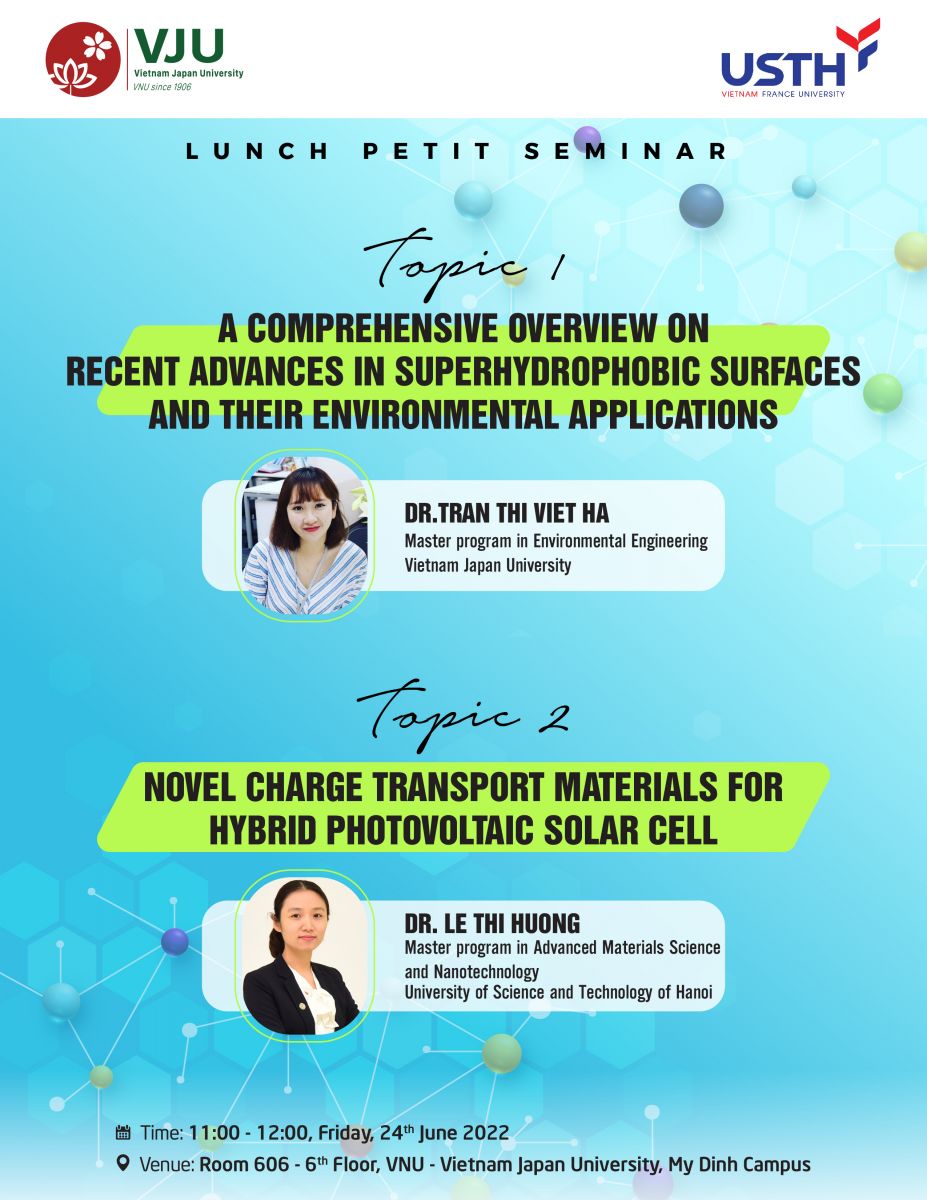
Dr. Le Thi Huong- AMSN-USTH
Topic: USTH “Novel charge transport materials for hybrid photovoltaic solar cell’
A thermally stable perovskite solar cell (PSC) based on a new molecular hole transporter (HTM) of 1,3-bis(5-(4-(bis(4-methoxyphenyl)amino)phenyl)thieno[3,2-b]thiophen-2-yl)-5-octyl-4H-thieno[3,4-c]pyrrole-4,6(5H)-dione (coded HL38) is reported. Hole mobility of 1.36 × 10−3 cm2 V−1 s−1 and glass transition temperature of 92.2 °C are determined for the HL38 doped with lithium bis(trifluoromethanesulfonyl)imide and 4-tert-butylpyridine as additives. Interface engineering with 2-(2-aminoethyl)thiophene hydroiodide (2-TEAI) between the perovskite and the HL38 improves the power conversion efficiency (PCE) from 19.60% (untreated) to 21.98%, and this champion PCE is even higher than that of the additive-containing 2,2′,7,7′-tetrakis(N,N-di-p-methoxyphenylamine)-9,9′-spirobifluorene (spiro-MeOTAD)-based device (21.15%). Thermal stability testing at 85 °C for over 1000 h shows that the HL38-based PSC retains 85.9% of the initial PCE, while the spiro-MeOTAD-based PSC degrades unrecoverably from 21.1% to 5.8%. Time-of-flight secondary-ion mass spectrometry studies combined with Fourier transform infrared spectroscopy reveal that HL38 shows lower lithium ion diffusivity than spiro-MeOTAD due to a strong complexation of the Li+ with HL38, which is responsible for the higher degree of thermal stability. This work delivers an important message that capturing mobile Li+ in a hole-transporting layer is critical in designing novel MHTs for improving the thermal stability of PSCs. In addition, it also highlights the impact of interface design on non-conventional HTMs.
——————————————–
Dr. Tran Thi Viet Ha- MEE lecturer
Topic: A comprehensive overview on recent advances in superhydrophobic surfaces and their environmental applications
Recently, researchers have been working to mimic the natural phenomenon for many diverse applications in the real life. Among that, superhydrophobic properties have gained remarkable attention with many interesting applications such as space and aerospace, defense, automotive, biomedical applications and engineering, sensors, apparel, and so on. The superhydrophobic surfaces exhibit non-wetting properties, so they can repel water due to their surface texture or chemical properties. In this presentation, the fabrication technologies, as well as the functional applications of the superhydrophobic surfaces, will be focused on. The current trends, challenges, and future research opportunities are also proposed, providing some ideas for the future development of this type of material.

